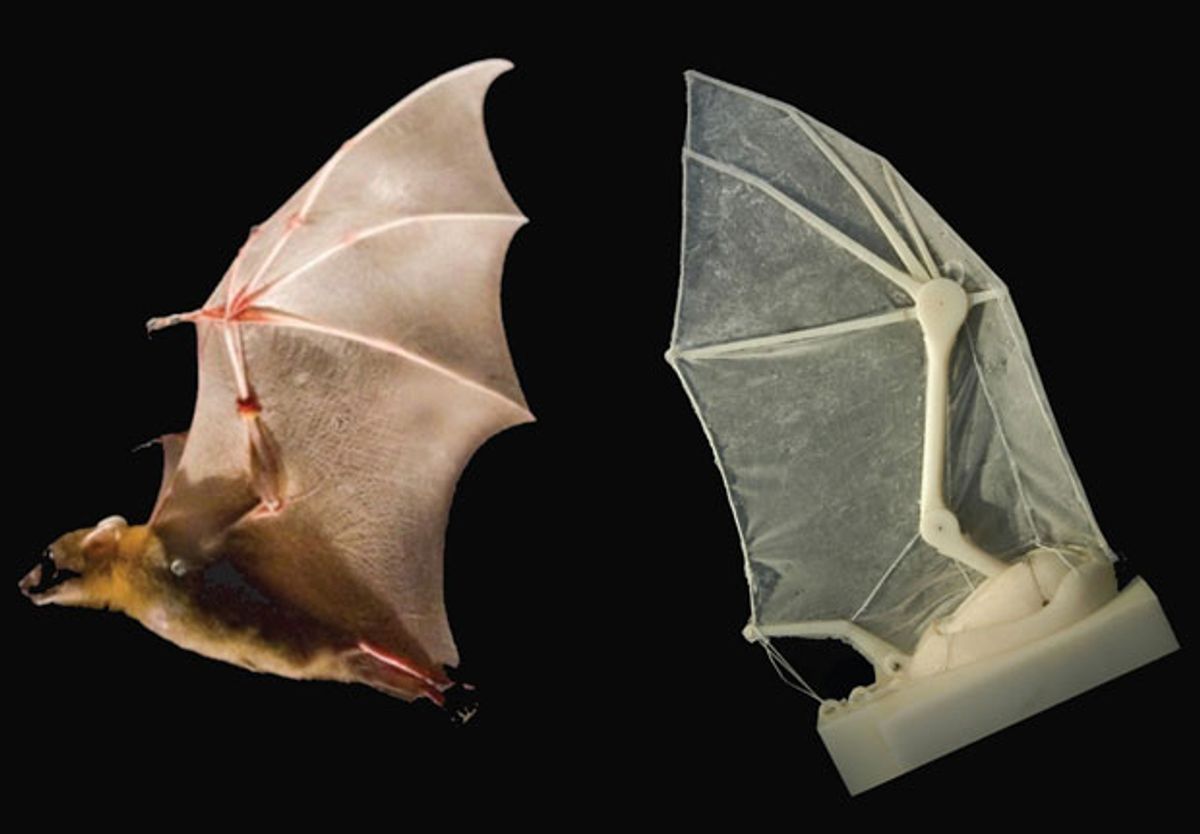Bats are awesome. At least, roboticists think so, and for good reason: bats are spectacular fliers, and we've got a lot to learn from them. Problem is, bats are bats, and bats, being bats, are more interested in catching and eating a bellyfull of bugs than sitting still while biologists fiddle with high speed cameras and X-ray machines and whatnot. The solution, as always, is a robot.
Brown University's robotic bat wing can't quite fly (not by itself, anyway), but it does a great job of pretending. With three servos and seven movable joints and bones 3D printed to match the real thing, the wing can match the basic flight parameters of bats well enough to allow biologists to measure energy consumption. By tweaking these parameters, it's possible to see what sort of flight techniques make a difference, and use those data to inform future wing designs for flapping wing UAVs. Here's an example of some preliminary results:
One experiment looked at the aerodynamic effects of wing folding. Bats and some birds fold their wings back during the upstroke. Previous research from Brown had found that folding helped the bats save energy, but how folding affected aerodynamic forces wasn't clear. Testing with the robot wing shows that folding is all about lift.
In a flapping animal, positive lift is generated by the downstroke, but some of that lift is undone by the subsequent upstroke, which generates negative lift. By running trials with and without wing folding, the robot showed that folding the wing on the upstroke dramatically decreases that negative lift, increasing net lift by 50 percent.
As it turns out, the robot wing breaks a lot, but even that's a learning experience, according to Brown grad student Joseph Bahlman:
During testing, for example, the tongue and groove joint used for the robot’s elbow broke repeatedly. The forces on the wing would spread open the groove, and eventually break it open. Bahlman eventually wrapped steel cable around the joint to keep it intact, similar to the way ligaments hold joints together in real animals.
The fact that the elbow was a characteristic weak point in the robot might help to explain the musculature of elbows in real bats. Bats have a large set of muscles at the elbow that are not positioned to flex the joint. In humans, these muscles are used in the motion that helps us turn our palms up or down. Bats can’t make that motion, however, so the fact that these muscles are so large was something of a mystery. Bahlman’s experience with the robot suggests these muscles may be adapted to resist bending in a direction that would break the joint open.
The researchers plan to start figuring out all of the complex relationships between flapping frequency, flapping amplitude, flapping angle, wing downstroke time, and wing folding, and what's energy efficient and what's not. Then, they can start messing with things, swapping out materials and structures to improve on the real thing. And if they could just teach the resulting robot to survive on insects, we'd be totally set.
[ Article ] via [ Brown University ]
Evan Ackerman is a senior editor at IEEE Spectrum. Since 2007, he has written over 6,000 articles on robotics and technology. He has a degree in Martian geology and is excellent at playing bagpipes.



